The Nishimura drum mold fragment was found.
The ceramic mold fragments used for casting bronze drums on display at the "Echoes of the Dong Son Culture" exhibition (November 22, 2023 - April 2024 at the National Museum of History) are reminiscent of the Japanese archaeologist Dr. Nishimura Masanari. In 1998, this Japanese archaeologist accidentally discovered a drum mold fragment at Luy Lau citadel (Bac Ninh province), causing a great stir in the research community. In 2001, another drum mold fragment was also found by Nishimura, this time in the earthen embankment of the northern outer wall of Luy Lau citadel. Previously, Luy Lau was the administrative center of Giao Chi district during the Han dynasty, and also a center of economy , culture, and religion during the first 10 centuries AD.
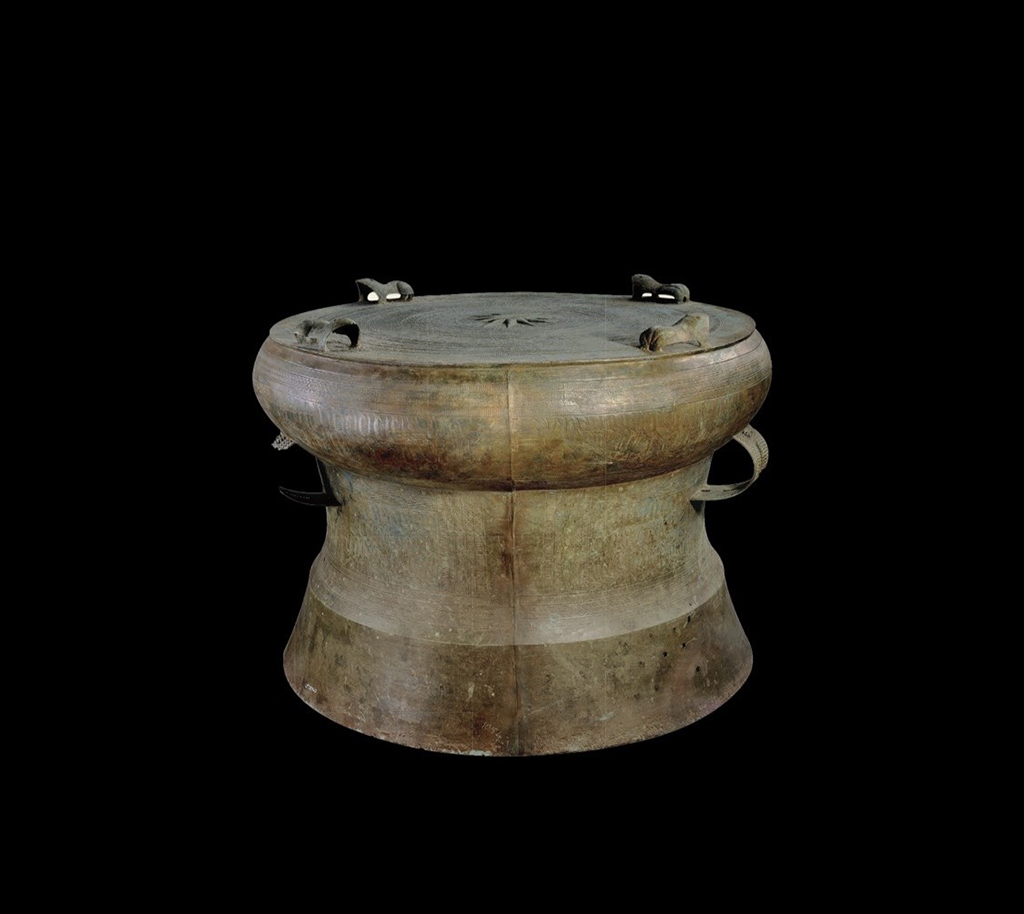
Golden Star Drum, collected in Thanh Hoa
According to the organizers of the Dong Son Echoes event , numerous archaeological excavations have been conducted in Luy Lau before and after Dr. Nishimura Masanari's discovery. The Institute of Archaeology surveyed the area in 1968, then conducted excavations in 1969, followed by large-scale research in 1986. Notably, in 2014 and 2015, archaeologists from the Vietnam National Museum of History and East Asia University (Japan) discovered nearly a thousand fragments of bronze drum molds along with a large number of artifacts related to bronze casting activities such as bowls, pouring pots, pot bases, furnace bottoms, furnace slag, etc., in the excavation pits. "This important discovery demonstrates the enduring vitality of the Dong Son culture in the flow of national history and provides answers related to the methods and techniques of bronze drum casting," the organizers stated.
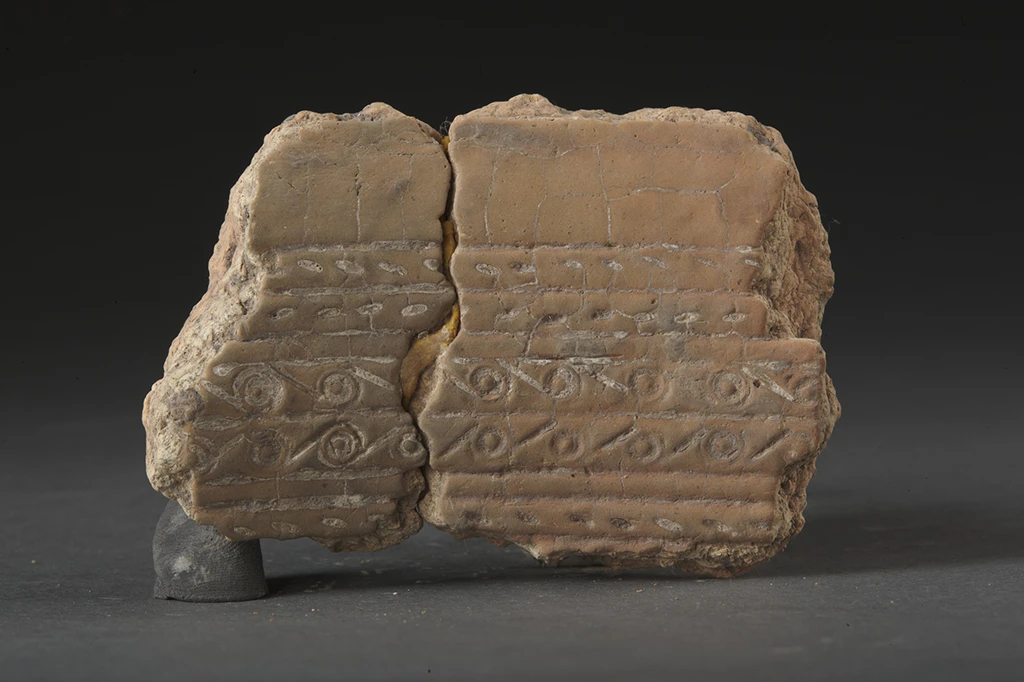
Fragment of a bronze drum mold (outer back of the drum), made of terracotta, 3rd-4th century. Excavated at the Luy Lau site, Bac Ninh.
At Dong Son Echoes , fragments of the drum's outer molds can be seen. These include the drum face mold, decorated with concentric circles, tangent circles, rice stalks, short parallel lines, hairpin shapes, inverted N shapes, stylized feathered human figures, and interlocking V-shaped patterns. Some fragments have decorative rims extending to the edge, featuring rice stalk patterns. The drum body and back molds also feature concentric circles, tangent circles, rice stalks, and short parallel lines. The drum base mold is undecorated.
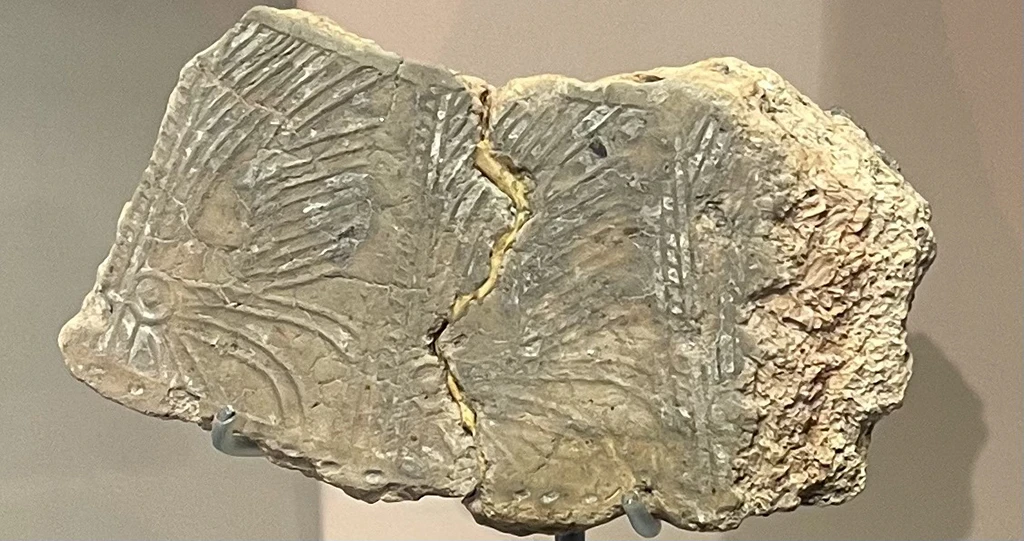
Fragments of bronze drum molds were found in Luy Lau.
These drum mold fragments are of great significance. They help archaeologists gradually visualize the techniques used in casting Dong Son bronze drums. According to the National Museum of History, the mold material was clay mixed with rice husks and some small pebbles, fired at temperatures up to 900 degrees Celsius. The patterns were created by direct carving onto the mold (recessed lines) or by mold printing (raised lines). Technical traces left on the mold include the opening of the pouring spout, the joints of the frog mold, and the handles. Based on stratigraphy and accompanying artifacts, the Luy Lau mold collection is dated to the 3rd-6th centuries.
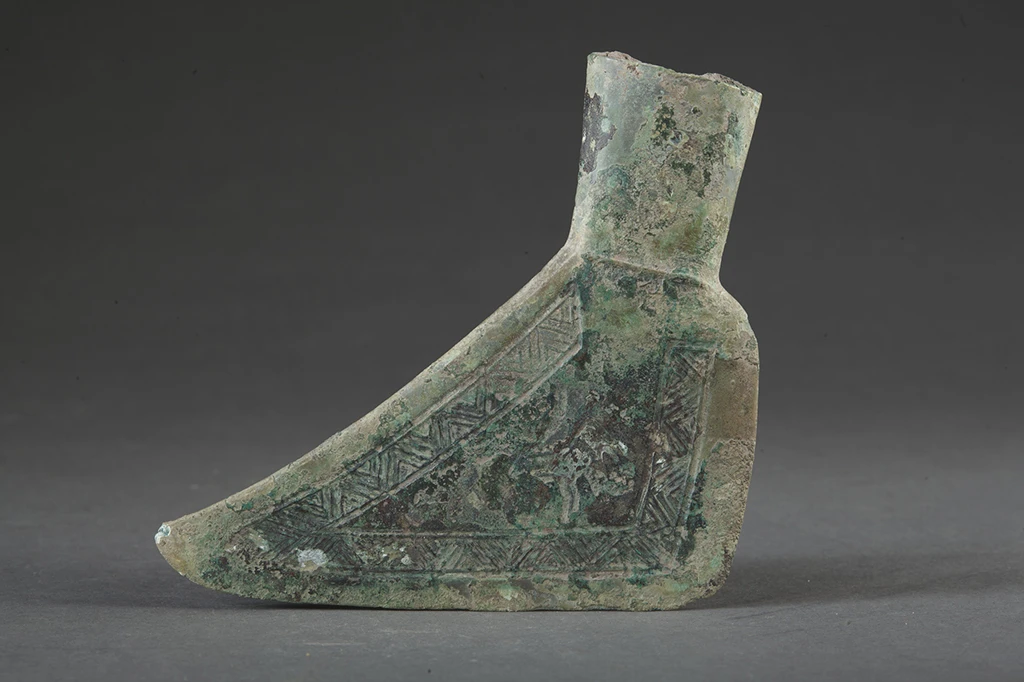
Dong Son bronze axe
Regarding the significance of this discovery, the National Museum of History stated that the bronze drums are typical artifacts of the Dong Son culture, with a wide distribution range from Southern China to mainland and island Southeast Asia. "How the ancients cast such large, intricately patterned bronze drums remains an unsolved mystery. In 2010 and 2011, several fragments of terracotta drum molds were discovered at the Non Nong Hor site in Mukdahan province (Thailand), however, this discovery has not yet been fully studied and widely publicized. To date, the Luy Lau site in Bac Ninh province is the only place in the world where a large number of bronze drum mold fragments have been discovered," the National Museum of History announced.
Furthermore, the dating of the mold collection falls between the 3rd and 6th centuries AD, providing a basis for re-examining the dating of the Dong Son drum system in Vietnam. It can be seen that, at least until the Six Dynasties period, Dong Son drums were still cast in the central plains of Northern Vietnam.
Recasting drums in Thanh Hoa
Information from the exhibition indicates that from 1964 to 1975, the Vietnam History Museum (now the National History Museum) collaborated with the Vietnam Fine Arts Museum to conduct experiments casting the Ngoc Lu bronze drum. However, all four attempts were unsuccessful. Later, in 2022, based on research into casting molds discovered in Luy Lau, archaeologists from the National History Museum reconstructed the drum's shape and successfully conducted experimental casting in the Che Dong bronze casting village (Thanh Hoa). Dr. Truong Dac Chien led this project.
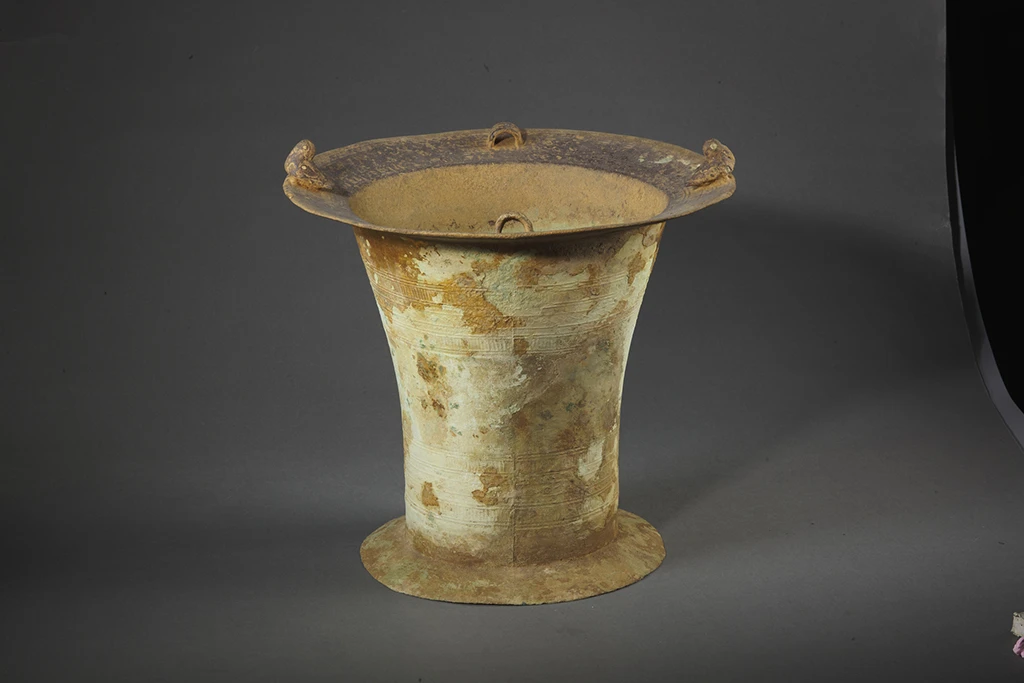
Copper pot
According to Dr. Truong Dac Chien, researchers previously focused on the possibility that the bronze drums were placed face up when pouring the molten bronze, and the pouring point was usually located at the base of the drum. However, through studying fragments of the Luy Lau casting molds, Dr. Chien and his colleagues believe that the pouring point was placed in the center of the central star. "Observing some bronze drums currently preserved at the National Museum of History, we also see traces of the pouring point in the middle of the drum's surface, typically on the Dac Glao drum in Kon Tum or the Phu Duy drum in the former Ha Tay province," Dr. Chien said.
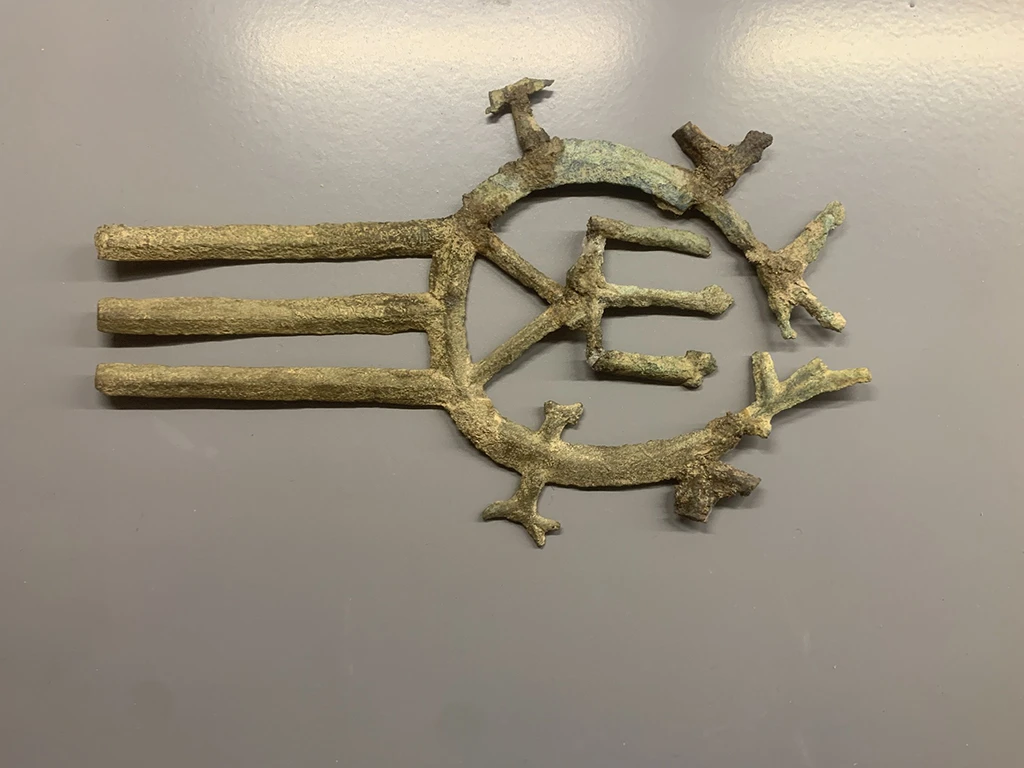
Copper hairpin
According to Dr. Chien, the results of this experimental casting activity have basically met the requirements set forth, both technically and aesthetically. In addition, the drum casting process of the ancient Vietnamese people has been relatively clearly identified. However, there are still some issues that need further research, such as how to create inscriptions on the mold, how to create the toad statue, or how to treat the mold surface to prevent sticking…
Dr. Chien stated: "With the Luy Lau drum mold collection, we have been able to fundamentally answer questions related to the methods and techniques of casting Dong Son drums. Besides its immense scientific and technical significance, from a historical and cultural perspective, the bronze drum mold fragments found in the ancient city of Luy Lau also provide evidence of the indigenous nature of Dong Son drums in Northern Vietnam, as well as the strong vitality of Dong Son culture throughout history."
The "Echoes of Dong Son" exhibition consists of three parts. Part one: New collections on Dong Son culture, showcasing several artifacts recently unearthed in the last 10 years. The National Museum of History, the National Museum of Korea, and East Asia University (Japan) have made numerous discoveries revealing the distribution and integration of Dong Son culture with other cultures. Part two: Dong Son drum molds discovered from the Luy Lau site, demonstrating the diversity of these mold fragments. Part three: Experimental bronze drum casting, showing the re-casting of Dong Son bronze drums from 1964 to the present.
Source link





































































































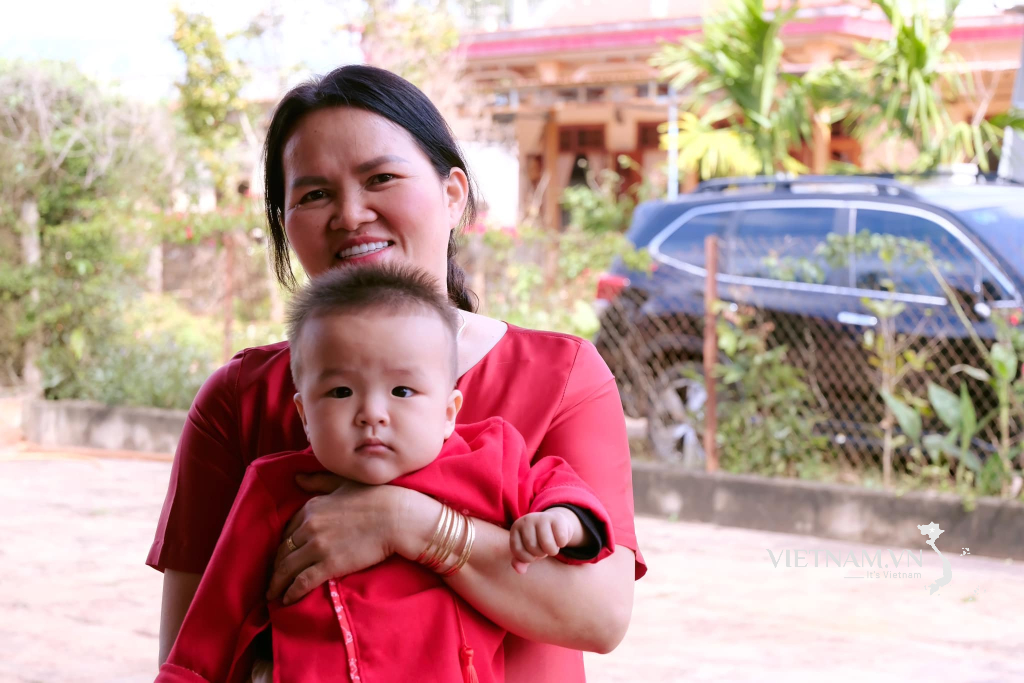



Comment (0)